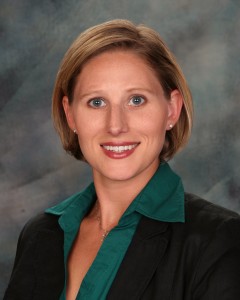
Linda Gabor is VP of Marketing and Customer Service at Call2Recycle, Inc.
Recently, I spoke with a young man in his early 20s about recycling and the conversation moved to product stewardship. I asked him if he knew what the term meant. He thought for a moment, shook his head and said, “Product stewardship, what’s THAT?”
Industry insiders know the definition of product stewardship to be “the act of minimizing health, safety, environmental and social impacts, and maximizing economic benefits of a product and its packaging throughout all lifecycle stages.” And, we know that “the producer of the product has the greatest ability to minimize adverse impacts, but other stakeholders, such as suppliers, retailers, and consumers, also play a role. Stewardship can be either voluntary or required by law.” Simply put, product stewardship is a policy of minimizing the environmental impacts of products in the marketplace.
Product stewardship programs focused on caring for our environment use the term often because it precisely describes an important aspect of our work – our mission. Current product stewardship organizations like PaintCare (serving paint industry), CARE (serving the carpet industry) and Call2Recycle (serving the battery industry) share the same challenge in connecting with consumers who are likely interested in what we do, but may be excluded by the words we use and what it means to them.
Using messaging that is easy to understand allows the consumer to embrace all the wonderful benefits of product stewardship. Scott Cassel, Chief Executive Officer and Founder of the Product Stewardship Institute (PSI), agrees that the term may not be as popular as other environmental buzzwords, but says that, as far as consumers go, taking actions that support product stewardship is far more important than just being able to recite a definition.
“Consumers are one of the most powerful change agents in the marketplace, and they can make a lasting, positive impact on the future of product stewardship just by making an effort to understand how our everyday products affect our health and our environment,” Cassel said. “Of course, product stewardship has to start with the manufacturer before consumers can do their part. That means designing products that are environmentally preferable and setting up programs that allow consumers to safely manage products at the end of their useful lives. The issue is less about getting consumers to use the term ‘product stewardship’ and more about getting them to take environmentally responsible actions that support the principles of product stewardship—actions like dropping off their leftover paint, prescription drugs, batteries, or unwanted electronics at designated take-back sites.”
How many people are left out of conversations about product stewardship simply because they are not familiar with the term?
To my knowledge, there are no studies that accurately measure the public’s understanding of our industry buzzwords. As a result, the Call2Recycle team conducted a quick, non-scientific phone survey with adults (aged 19-73, with a variety of education levels, living in different states) and asked them two questions: first, What is recycling? and second, What is product stewardship? Here’s what we learned: Everyoneknew what recycling means, how and why it is done. But, with product stewardship:
- Almost no one knew of the term or what it meant. The one who did, a 43-year-old executive who works with automotive paint pigments, was familiar with product stewardship because it’s his business to know.
- About half were so unfamiliar with the term that they wouldn’t even venture a guess.
- One-third had no idea but felt comfortable sharing a guess based on their knowledge of the words “product” and “stewardship.” Some of the responses included: “...using products as directed...”, “…sharing products with others, ” or this one, “…a marketing term, to wisely maintain legal integrity of a brand or trademark…”
As product stewardship organizations, we need to identify ways to better share information and talk about who we are and what we do using language that is understandable by industry experts and consumers, alike. With Earth Day 2013 upon us, it’s a great time to talk about this topic with a consumer friendly approach.
Launched in response to the environmental damages caused by a massive oil spill in Santa Barbara, Calif., the first Earth Day in 1970 led to the creation of the U.S. Environmental Protection Agency (EPA) and the passage of the Clean Air, Clean Water, and Endangered Species Acts. It was the spark for a cultural shift, with millions of individuals, spearheading and rallying behind efforts to protect our environment and natural resources. This revolution of sorts literally changed how business is done, how products are designed, what goes into them and what happens to them at the end of their life. This is what product stewardship is at the consumer level.
Now 43 years later, studies show that consumers are still interested in and passionate about eco-friendly solutions and they are supportive of product stewardship efforts and learning more about it, even though they may know what it is called.
ShareAPR